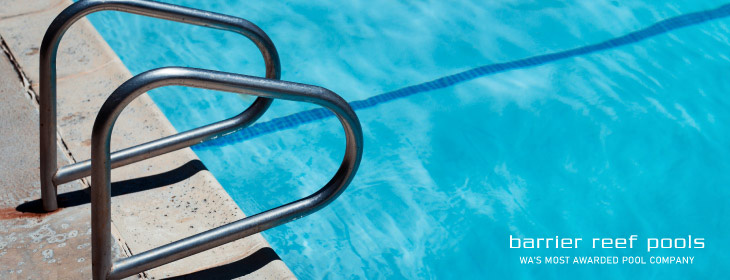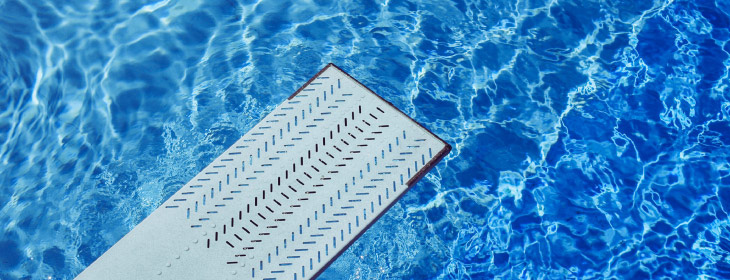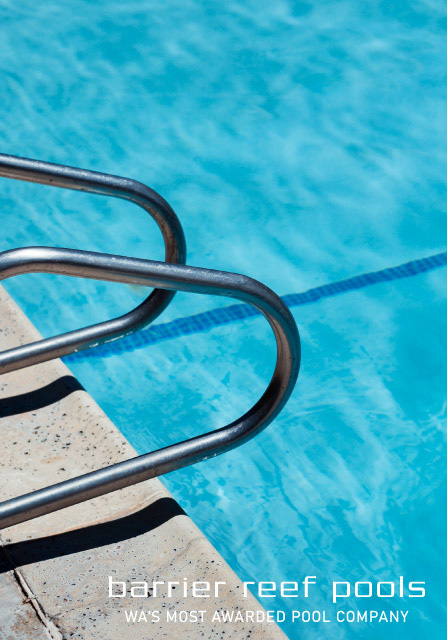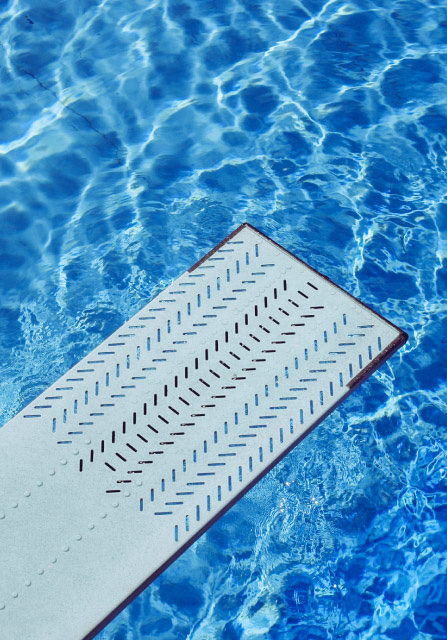You will need to circulate the water in your fibreglass pool every day, in order to prevent the pool from turning stagnant. A stagnant body of water could become home to twigs, algae, bacteria, dirt, and other kinds of debris. When this happens, then the water in your fibreglass pool can become too unsafe to swim in. In order to prevent this from happening, your pool pump will need to be run every day.

Your fibreglass pool, if it becomes a body of stagnant water, can be home to all kinds of small particles. The pool pump has the responsibility of preventing this from happening, by circulating the water in your pool. It also filters out any foreign contaminants that get too close.
Do you need to run your pool pump every day?
Running your pool pump can increase your energy bills. This is why you may not want to run your pool pump throughout the day. You should only keep your pool pump running for the minimum amount of time that you need. Note that when you run your pool pump more often, the pool pump itself can also wear down faster.
With that said, you will need to run your pool pump for a few hours at least, every day. Should you keep your pool pump running 24×7, then you’re overdoing it. Not only will you need to pay higher energy bills, but you’ll also need to get the pool pump repaired or replaced, sooner. But then, how long should you keep running your pool pump?
In order to determine how long you should keep your pool pump running, you’ll need to look at its flow rate as well as its turnover rate.
Flow rate
Your pump’s flow rate is the amount of pool water that it can filter. There’s a time period that’s set, within which the pool can filter water. You can either measure it as gallons every minute, or hour. You’ll be able to find both numbers when you go to check the flow rate of your pool pump. It’s important that you know how much water you have in your pool as well.
This is because when the total amount of pool water is divided by the flow rate, then you can determine its turnover rate. To find out what the flow rate is, you’ll need to refer to the instruction manual that came with your pool pump.

Turnover rate
Once you’ve discovered what the flow rate of your pool pump is, then you can find the turnover rare as well. The turnover rate is a figure that tells you how long you should be running the pool pump on a daily basis. Say the turnover rate you calculated for your pool was one. This means that it takes around an hour for the pump to completely circulate all the water that’s in the fibreglass pool, once.
To arrive at this figure, however, you’ll need to know what the total volume of your fibreglass pool is. This figure will depend on what physical dimensions your pool has. Instead of trying to calculate this yourself, consider making use of an online calculator instead. Just add what physical dimensions your pool has to the calculator, and it will give you the total volume.
When you divide the total volume of water in your pool by the flow rate of the pool, you’ll get its turnover rate.
What kinds of flow rates can you expect?
Earlier, there was only one pool pump flow rate that people had access to. This is because the pool pumps back then were of single speed. Essentially, this means that the pool pump could only run at one speed. Usually, this was the high-speed setting. People could not control the amount of energy that was being used by the pool pump throughout the day.
But a lot has changed over the years. Nowadays, your pool pump can come with not just two, but also variable speed settings. This allows you to have better control over how much energy your pool pump is using.
Dual speed setting
In these kinds of pool pumps, you can choose between both high as well as low speeds. If you don’t want your pool pump to use up too much energy, then run it at a low speed. The low-speed option is also less noisy.
Speed settings that are variable
You can also opt for a pool pump that has a speed setting that is variable. In these kinds of pool pumps, you generally get three speed settings – high, medium, and low. You can also access various flow rates as well. Now that you already know how to find the turnover rate of your fibreglass pool, you can calculate how long you should run the pump at any speed level.

For how long should you run your fibreglass pool pump?
It’s the turnover rate of your pool, that will determine for how long you should run it. But you should also note that:
- If there are more people in the pool, then the pool pump should be allowed to operate longer. People tend to bring in foreign contaminants with them, which should be filtered out.
- If it’s a hot day, then also the pool pump should be allowed to run longer. When it’s warmer, then the pool water is more likely to attract bacteria as well as algae. This can be prevented by running your fibreglass pool pump for longer.
- When there has been heavy rain, or if there’s been a storm, then it’s very likely that foreign contaminants will have entered your pool. Following such events, run your pool pump longer, to get rid of finer particles. For the larger debris, you’ll have to use your pool skimmer net.
Conclusion
How long you should run your pool pump will depend on several factors, such as the size of the pool, how many people are using it, the environmental conditions, and more. But when you know the flow and the turnover rates, then you can determine how long you should run your pool pump. Use this guide to learn more about pool pumps, as well as how long they should be run.
You will need to circulate the water in your fibreglass pool every day, in order to prevent the pool from turning stagnant. A stagnant body of water could become home to twigs, algae, bacteria, dirt, and other kinds of debris. When this happens, then the water in your fibreglass pool can become too unsafe to swim in. In order to prevent this from happening, your pool pump will need to be run every day.

Your fibreglass pool, if it becomes a body of stagnant water, can be home to all kinds of small particles. The pool pump has the responsibility of preventing this from happening, by circulating the water in your pool. It also filters out any foreign contaminants that get too close.
Do you need to run your pool pump every day?
Running your pool pump can increase your energy bills. This is why you may not want to run your pool pump throughout the day. You should only keep your pool pump running for the minimum amount of time that you need. Note that when you run your pool pump more often, the pool pump itself can also wear down faster.
With that said, you will need to run your pool pump for a few hours at least, every day. Should you keep your pool pump running 24×7, then you’re overdoing it. Not only will you need to pay higher energy bills, but you’ll also need to get the pool pump repaired or replaced, sooner. But then, how long should you keep running your pool pump?
In order to determine how long you should keep your pool pump running, you’ll need to look at its flow rate as well as its turnover rate.
Flow rate
Your pump’s flow rate is the amount of pool water that it can filter. There’s a time period that’s set, within which the pool can filter water. You can either measure it as gallons every minute, or hour. You’ll be able to find both numbers when you go to check the flow rate of your pool pump. It’s important that you know how much water you have in your pool as well.
This is because when the total amount of pool water is divided by the flow rate, then you can determine its turnover rate. To find out what the flow rate is, you’ll need to refer to the instruction manual that came with your pool pump.

Turnover rate
Once you’ve discovered what the flow rate of your pool pump is, then you can find the turnover rare as well. The turnover rate is a figure that tells you how long you should be running the pool pump on a daily basis. Say the turnover rate you calculated for your pool was one. This means that it takes around an hour for the pump to completely circulate all the water that’s in the fibreglass pool, once.
To arrive at this figure, however, you’ll need to know what the total volume of your fibreglass pool is. This figure will depend on what physical dimensions your pool has. Instead of trying to calculate this yourself, consider making use of an online calculator instead. Just add what physical dimensions your pool has to the calculator, and it will give you the total volume.
When you divide the total volume of water in your pool by the flow rate of the pool, you’ll get its turnover rate.
What kinds of flow rates can you expect?
Earlier, there was only one pool pump flow rate that people had access to. This is because the pool pumps back then were of single speed. Essentially, this means that the pool pump could only run at one speed. Usually, this was the high-speed setting. People could not control the amount of energy that was being used by the pool pump throughout the day.
But a lot has changed over the years. Nowadays, your pool pump can come with not just two, but also variable speed settings. This allows you to have better control over how much energy your pool pump is using.
Dual speed setting
In these kinds of pool pumps, you can choose between both high as well as low speeds. If you don’t want your pool pump to use up too much energy, then run it at a low speed. The low-speed option is also less noisy.
Speed settings that are variable
You can also opt for a pool pump that has a speed setting that is variable. In these kinds of pool pumps, you generally get three speed settings – high, medium, and low. You can also access various flow rates as well. Now that you already know how to find the turnover rate of your fibreglass pool, you can calculate how long you should run the pump at any speed level.

For how long should you run your fibreglass pool pump?
It’s the turnover rate of your pool, that will determine for how long you should run it. But you should also note that:
- If there are more people in the pool, then the pool pump should be allowed to operate longer. People tend to bring in foreign contaminants with them, which should be filtered out.
- If it’s a hot day, then also the pool pump should be allowed to run longer. When it’s warmer, then the pool water is more likely to attract bacteria as well as algae. This can be prevented by running your fibreglass pool pump for longer.
- When there has been heavy rain, or if there’s been a storm, then it’s very likely that foreign contaminants will have entered your pool. Following such events, run your pool pump longer, to get rid of finer particles. For the larger debris, you’ll have to use your pool skimmer net.
Conclusion
How long you should run your pool pump will depend on several factors, such as the size of the pool, how many people are using it, the environmental conditions, and more. But when you know the flow and the turnover rates, then you can determine how long you should run your pool pump. Use this guide to learn more about pool pumps, as well as how long they should be run.




